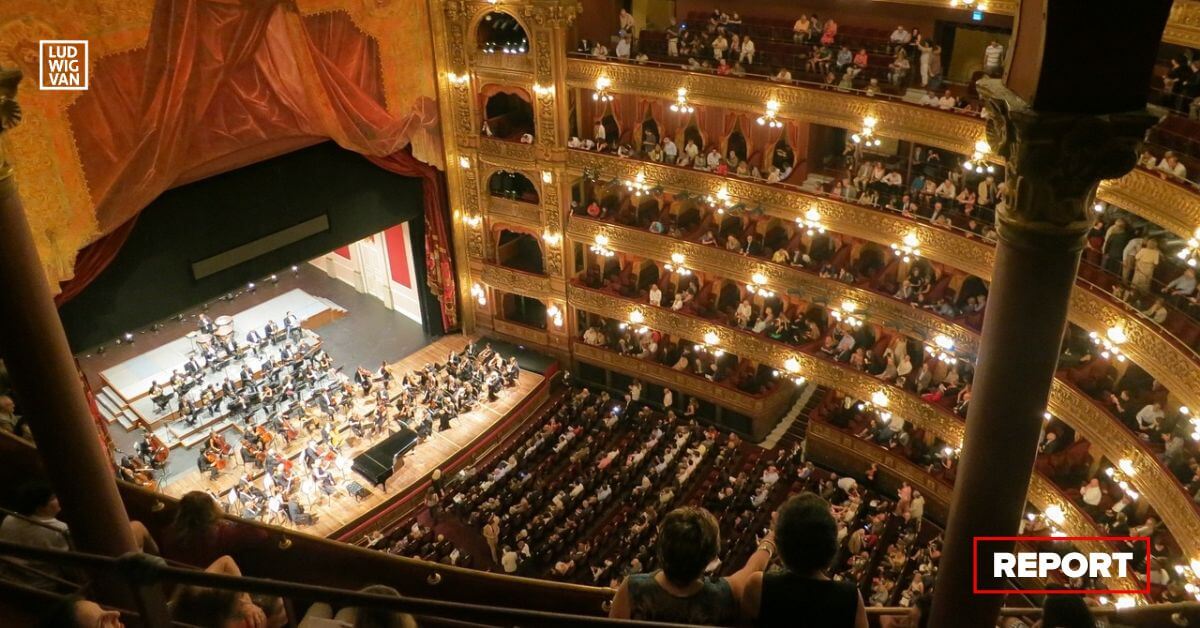
It’s not your imagination — that feeling of communing with the rest of the audience while listening to live Beethoven and Brahms is real, and can be measured. That’s what scientists have demonstrated in a recent research study.
The paper, titled Audience synchronies in live concerts illustrate the embodiment of music experience, was published in the journal Nature on October 5, 2023.
The team of German and Swiss researchers looked at 132 audience members at three classical music concerts which were held in public. The average age was just under 47. All three programmes of chamber music were identical, and included Ludwig van Beethoven’s String Quartet Op. 104 in C minor, Johannes Brahms’ String Quartet Op. 111 in G major, and Epitaphs by contemporary Australian composer Brett Dean.
They looked at the physical and motor responses of the participants, and used standard questionnaires to determine personality types.
As a rule, people aren’t aware that their movements and physiology are becoming synchronized. The participants agreed to monitoring of their physiological functions, including heart rate, electrodermal activity, respiration rate and respiration. Motion capture technology and ceiling-mounted cameras videotaped their movements.
What they found
They began with four hypotheses, and of those, three were at least largely confirmed via the responses of the participants. That includes:
- “Clear evidence” that heart rate, respiration rate, and skin conductance response moved to synchronize across the audience. Skin conductance is that momentary response when your skin conducts electricity, and it’s related to your emotional reaction to some kind of stimulus.
- The experiment took place during the pandemic, with the audience spaced out, but the researchers noted body movements that synchronized as well.
The one exception was breathing, which did not sync across the audience.
In addition:
- The level of synchrony was higher — and for heart rate in particular — when listeners were emotionally moved by the music.
- It was also linked to personality traits, where openness led to a greater degree of synchrony, and traits like fear and depression (which tend to isolate individuals) to a lesser degree.
That includes personality types described as extroverts, who tend to be the most social, and who focus on self-value. When people went to the concert more for social reasons, as opposed to the music itself, their responses were more muted.
Beyond the concert hall… Why it’s important
The researchers were interested in what they called “the embodiment of the mind”. More and more is being devoted to the topic in the field of cognitive science.
In particular, they focused on measuring reactions of the autonomous nervous system (ANS). The mind is linked to movements, and there’s a kind of constant loop that runs back and forth between what our brains predict will happen, and what the body actually senses. It’s a newer way of understanding how the functions connect.
The kind of physical synchrony between people that the study found is linked to social interactions, which has become a hot topic of the research community in recent years. The phenomenon is also connected to empathy.
“When we talk about very abstract things such as aesthetic experiences, how you respond to art and to music, the body is always involved there,” Wolfgang Tschacher, a psychologist at the University of Bern who led the research as part of the Experimental Concert Research (ECR) project, told Agence France-Presse (AFP).
While the study used classical music concerts, he notes that the phenomenon would extend to all types of musical performance.
It’s also important for the future of Western classical music concerts as they increasingly come under financial pressures from all sides. The ECR has as its motivation to validate the live music experience with empirical research into the mechanisms that come into play during a concert.
Can the concert hall experience be reinvented for the modern era? Should it be? These are the questions they look to examine.
#LUDWIGVAN
Get the daily arts news straight to your inbox.